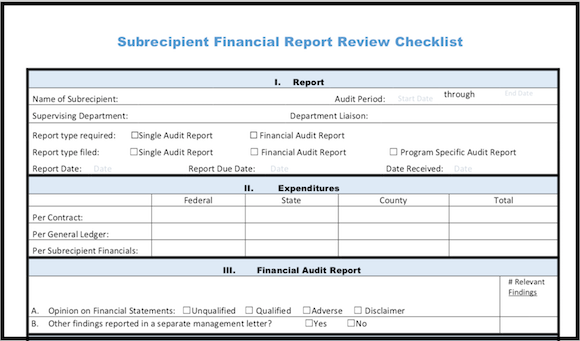|
Local government finance departments are frequently asked to evaluate the financial stability of nonprofit organizations. This could be nonprofits that the government is already working with, or to which it is considering making a grant. In such cases, the finance department should evaluate the nonprofit organization’s financial condition. It is wise to answer questions, such as ‘is the nonprofit strong enough financially to continuously operate for at least the time specified in the contract?,’ before starting a working relationship or providing funds to the nonprofit. The same questions should be answered for companies that a government is working with or considering working with, such as software vendors, franchisees or construction contractors. What are the steps for evaluating a nonprofit organization’s financial stability?
The first thing to do is to obtain the three most recent years of financial statements for the organization. The level of detail and number of years that you should review will vary, depending on the importance of the nonprofit to the local government’s success.
However, the following five questions are commonly the minimum concerns you should address and verify when reviewing the organization’s financial statements:
If any of these five questions above indicate increased risk, it is appropriate to have further conversation with entity management to determine:
a) whether there are good reasons and explanations for the risks noted (e.g., unrestricted net assets of less than 30 days of operating expenses may be acceptable if they have quick access to capital of a parent organization or a “white knight” funder); and /or b) to agree on how they can mitigate the noted risks (e.g., improving their current ratio before entering into a contract with the local government).
Of course, the five financial strength considerations above represent only a simple review of the most important elements of an entity’s financial stability. If a more thorough assessment is desired, there are many other elements of financial strength you may want to consider, such as:
Please contact Kevin Harper directly if you’d like further help on how to evaluate an organization’s financial stability beyond and/or after the factors explained above.
Kevin Harper, CPA kharper@kevinharpercpa.com (510) 593-503
If you'd like to get more free tips, as well as downloadable tools and templates for your agency, please join our mailing list here!
(We send 1-2 emails a month at a maximum, and only send useful information. You can unsubscribe at any time.)
Comments
|
The Government Finance and Accounting BlogYour source for government finance insights, resources, and tools.
SEARCH BLOG:
Meet the AuthorKevin W. Harper is a certified public accountant in California. He has decades of audit and consulting experience, entirely in service to local governments. He is committed to helping government entities improve their internal operations and controls. List of free Tools & Resources
Click here to see our full list of resources (templates, checklists, Excel tools & more) – free for your agency to use. Blog Categories
All
Need a Consultation?Stay in Touch! |
Search Across Entire Site:
HELPFUL LINKS:
|
461 2nd Street, #302
San Francisco, CA 94107 (510) 593-5037 KHarper@kevinharpercpa.com |




 RSS Feed
RSS Feed